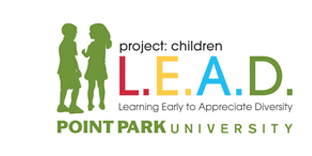Lesson 3 Physical Differences Lesson Series

Curriculum | Resources | Workshops | Activities | About Us
Physical Differences
Teachers: Becky Weiler, Kelly Lewis, and Justin O'Toole
Project Children L.E.A.D. Director: Dr. Vincenne Revilla Beltran
Subject Area: Diversity, Social Studies
Grade level: Preschool (Ages 3-4)
Length of Lesson: 25 minutes
LEARNING GOALS:
PA Early Learning Standards:
Expressive Language
-
2.4 Ask and answer relevant questions and share experiences individually and in groups
Logical-Mathematical
-
2.1 Recognizes how things are alike and identifies objects that belong together.
Personal/Social
-
P3.7 Cooperate in small and large group activities.
Physical and Motor Development
-
2.2 Exhibit manual coordination and dexterity.
NAEYC Standards:
Scientific Inquiry and Knowledge
-
2.53P-K Children are provided varied opportunities and materials that encourage them to use the five senses to observe, explore, and experiment with scientific phenomena.
Understanding Ourselves, Our Communities, and Our World
-
2.63U Children are provided varied learning opportunities that foster positive identity and an emerging sense of self and others.
-
2.65P-K Children have varied opportunities to engage in discussions about fairness, friendship, responsibility, authority, and differences.
High Scope-Key Experiences:
-
Social Relations
-
Language and Literacy
-
Math and Logic
OBJECTIVES:
The students will be able to:
-
Discuss the differences/similarities of their friends and others, after reading the book, We Can Do It!
-
Explore and express their ideas, senses, and feelings on being different, through actively participating in a class activity, based on using their sense of touch and smell.
MATERIALS:
Book-We Can Do It!, by Laura Dwight
Shoeboxes (at least six)
A variety of objects to touch and smell (examples: seashells, feathers, cotton balls, playdough, blocks, noodles, oranges, lemons, etc...)
Scarves for blindfolds
Sensory tables (one for sand, rice, water)
Playdough or clay
ADAPTATIONS AND ACCOMMADATIONS TO DIFFERENTIATE INSTRUCTION:
To accommodate the needs of all students, each activity should be completed in small groups. This will enable a teacher to provide individualized assistance.
PROCEDURES:
REVIEW AND INTRODUCE:
Review with students their unique characteristics and discuss their similarities and differences. Tell students that we will be learning about some children who may look a little different, but they play and like the same things as you. Read the book, We Can Do It!, by Laura Dwight.
DEVELOP:
-
After reading the book, further discuss with students about the little girl who was blind in the story. Tell students that when a person is unable to use their eyes, they use their hands, nose, and ears instead.
-
Tell students that they will pretend that they are unable to use their eyes, by putting a scarf over them. Further explain that they will be using their sense of smell and touch to figure out the object in each box. (This activity should be done in small groups with a teacher. The other students can be in center areas designed around the lesson. Each group can then rotate to the different areas).
-
Divide students into 5 small groups. Direct each group to an area, in which they will be using their sense of touch to play. (Center areas include: sand table, rice table, water table, playdough table, and feely boxes)
-
At the feely box center, the teacher will blindfold each child and have him or her use their hand to feel inside the box. Each child will then guess what they think the object is.
ASSESS:
All assessment will be done through observation. Are the students able to discuss similarities and differences? Are the students participating in sensory activities?
CLOSURE:
After each group has completed the activities, have the students join together for a circle time. Ask the students if they liked using their nose and hands to guess the objects? Was it hard? What were some of the objects and what did they feel like?
REFLECT:
The lesson went very well. The students loved trying to guess the objects. Some of the students wanted to continue the activity on their own. They are beginning to understand and appreciate everyone's differences. This activity has helped our classroom become more compassionate towards others and respect their friend's feelings.

